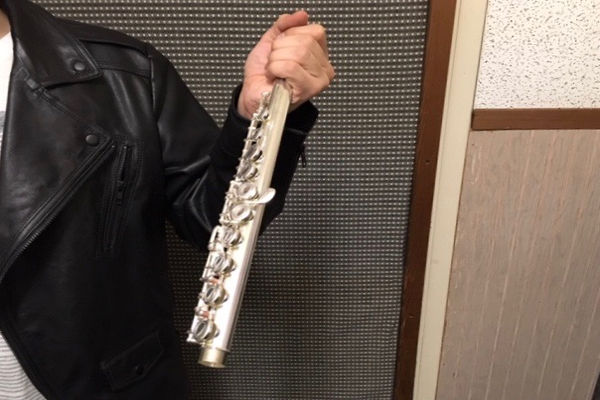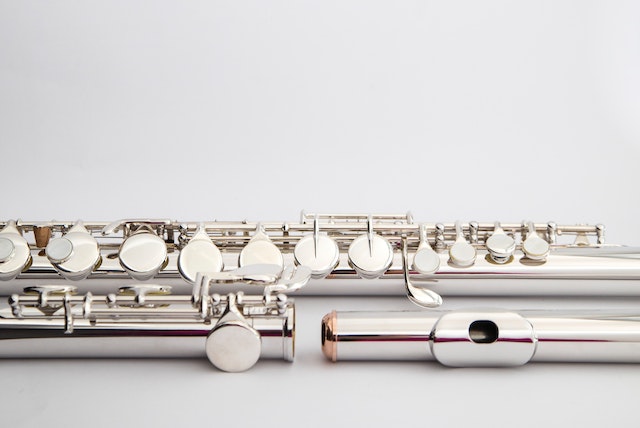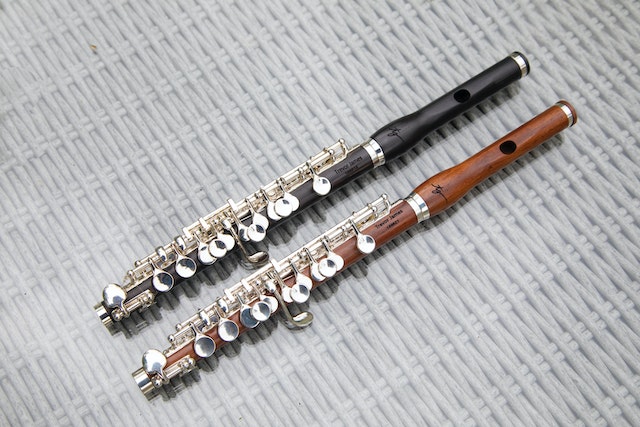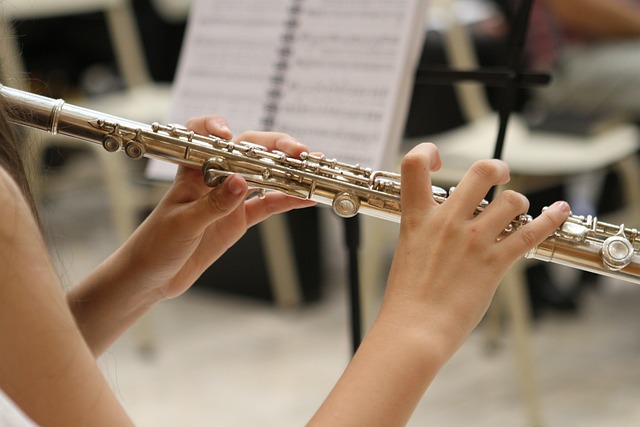Shopping for a used flute in Los Angeles? Whether you’re an experienced player or new to the instrument, finding the perfect flute requires more than just a discerning ear. Here’s a breakdown of flute parts, materials, and types, to aid you in your search for a used flute.
The Main Parts Of a Flute
A standard flute comes in three separate sections. Here’s a quick rundown of each part for beginners:
Head Joint
Flutes produce their unique sound by passing air over an open hole rather than a reed. The head joint is essential to tone production and usually has no keys attached.
Body
The body of the flute is the center section that has the majority of the keys and holes.
Foot Joint
This is the smallest section of a flute, and is integral to tuning. It usually has three holes – one underneath and two on top – which can be operated by keys. Some flutes have an additional ‘B foot’ key, which allows players to achieve notes beyond the usual bottom C note.
Flute Materials
Flutes come in a variety of materials, each with its own unique sound and characteristics. The most common materials used to make flutes are silver, nickel, gold, and wood. Silver is the most popular material used for flutes since it produces a bright tone that carries well in an ensemble setting. Nickel is often used as an alternative to silver because it has similar tonal qualities but at a lower cost. Wood flutes offer more versatility when it comes to tone color but can be difficult to maintain over time due to environmental factors such as humidity and temperature fluctuations.
The Flute Family
The flute family is a diverse group of instruments that spans classical, jazz, and folk genres. There are both traditional and modern flutes from all over the world. The most common members of the family are the Western concert flute, piccolo, alto flute, and bass flute. Each of these instruments is distinct in terms of tonal range, size, and key mechanism.
Beginner Flutes vs Professional Flutes
When it comes to buying a used flute in Los Angeles, understanding the differences between beginner, intermediate, and professional models is key. Beginner flutes are usually made from plastic or brass with nickel plating and have open hole keys. Intermediate flutes tend to be more complex and may be constructed of silver-plated brass or even solid silver—allowing notes to resonate better in larger spaces. Professional flutes are often handmade and can be made from any number of materials such as solid silver, gold, platinum, and wood, giving players access to different metal options for the body as well as features and mechanisms that aren’t available on beginner models. The cost of a professional model depends largely on the quality of material used but typically starts at $2,800 or more. On the other hand, you can pick up a used beginner flute for as little as $300.
Inspecting A Used Flute
When buying a used flute, it’s important to inspect each part of the instrument to make sure that everything is in good condition. A thorough inspection should include checking the head joint, body, and foot joint for any signs of wear or damage. The keys should be carefully examined for any corrosion or discoloration, as this may signal an issue. The pads should also be checked for any tears, cracks or discoloration since these could cause air leakage and affect overall performance.
It’s also important to test out all of the keys for reliable action. They should move smoothly without sticking when pressed and have even response across all notes. Finally, it’s essential to check the inner parts of the flute such as the cork, springs and joints for signs of rusting or corrosion due to age or inadequate maintenance.
Test How It Plays
Inspecting a used flute before purchase is essential if you want to get your money’s worth out of an instrument. However, it’s important to see how it feels to play. To do this properly, play through some scales and reach the highest and lowest notes the instrument is capable of producing. If possible, have some sheet music handy and play through different pieces. Pay particular attention to the sound quality, reliability of key action, and intonation between registers. This process will take a bit more time than just looking at an instrument on its own but can pay off in terms of finding a well-made used flute that meets your needs.
Looking For a Used Flute in Los Angeles?
Adam’s Music is the go-to place for music lovers in West Los Angeles. Our store offers a broad selection of instruments and equipment available for purchase or rent. Take advantage of a free introductory lesson with one of our world-class teachers. Get in touch today.








